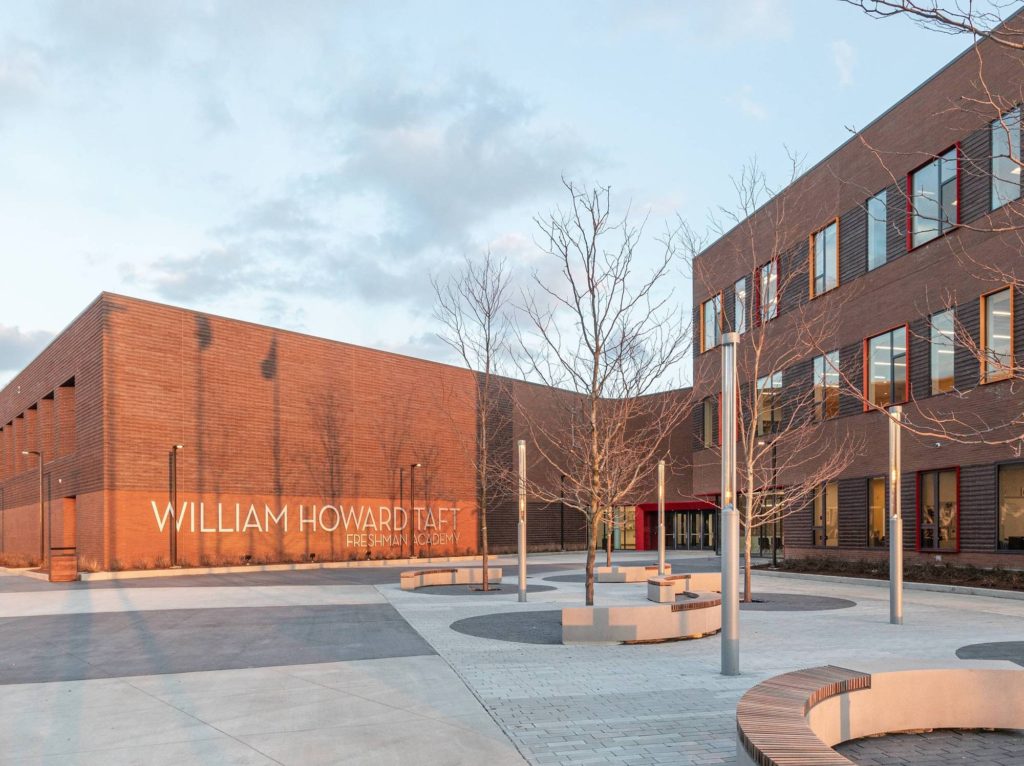Words and Photos: Spencer Allan, STL Architects
Brick masonry has a unique relationship with Chicago architecture. At the turn of the nineteenth century, the fast-growing city became a national commercial and rail hub, at its peak producing more than 700 million bricks annually from over 50 brickyards. To this day, the iconic material is a part of homes, churches, shops, and public buildings across the city.
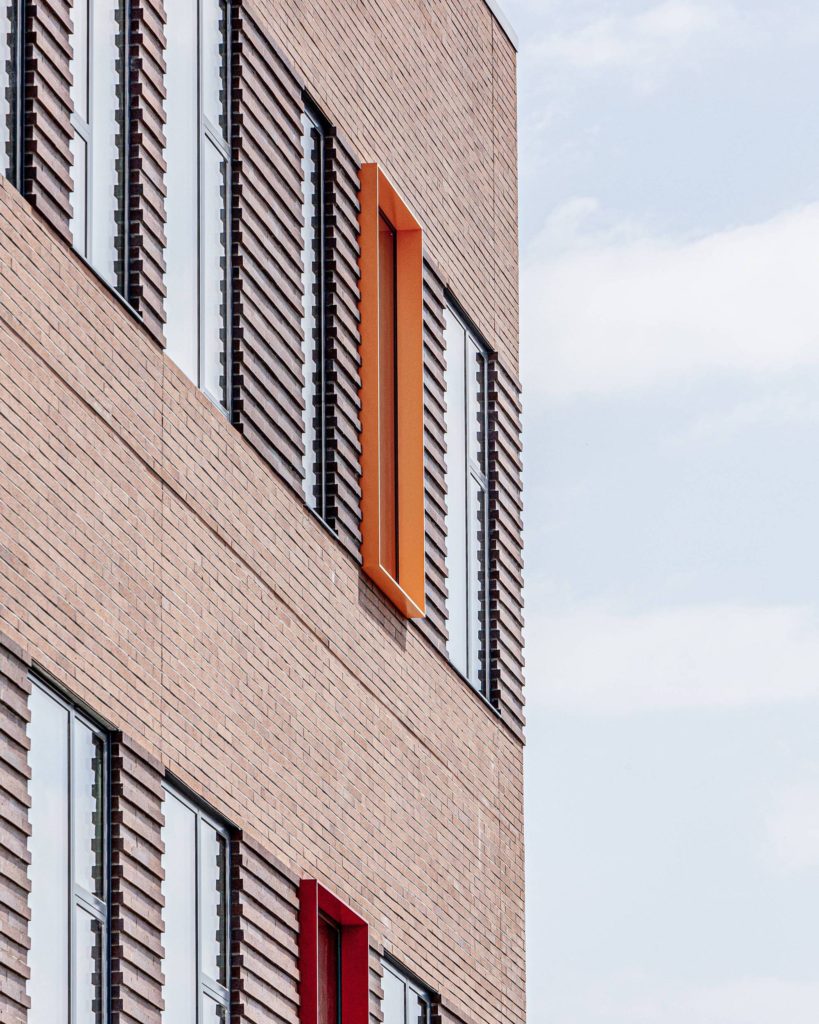
Brick has a historical connection to the city, as well as durability, that makes it the favored material of Chicago Public Schools when commissioning new schools to be built. When CPS asked STLarchitects for help designing William Howard Taft Freshman Academy on the northwest side of the city, the architects knew that the final school had to combine long-lasting design with a modern sensibility. They selected a large 16”x4” Emperor brick to use for Taft Academy’s façade. The thin, elongated shape of the Emperor brick, besides being cost-effective and easy for a mason to pick up and stack, is also an iconic form in Chicago architecture, similar in proportion to the slim Roman brick favored by Frank Lloyd Wright.
“Any project where we are able to work with the client and then implement a vision, for me, that makes it all worthwhile,” STL Technical Director Tracy Salvia said. To Salvia, the masonry-clad design of the building was critical in creating a community space that was long-lasting while also welcoming.
“There is a certain monumentality and sense of permeance that masonry can impart,” Salvia said. “It has that solid, positive quality when used in a friendly and welcoming manner.” Built on a historical site with the possibility of unmarked graves or old building foundations, the architects worked with an archeologist to find the ideal placement for the building. The resulting layout accounts for this and dozens of other factors, including ease of construction, preservation of existing trees, traffic flow optimization, and sunlight exposure. The final school, completed in 2019, is state-of-the-art and contains two wings. In the three-story academic wing are classrooms, science labs, computer labs, an art space, and music suites. In the second wing are the cafeteria, auditorium, and athletic facilities. STLarchitects has a history of designing one-of-a-kind brick masonry for projects, such as the Back of the Yards School in 2013, and they continued this tradition with Taft Academy. Central to the entire school is its innovative use of custom brickwork techniques to create a school that is both highly functional and elegant.
Breaking through the Grid
A challenge the architects encountered in designing the masonry façade was creating that sense of warmth and friendliness in what could otherwise become an imposing three-story volume.
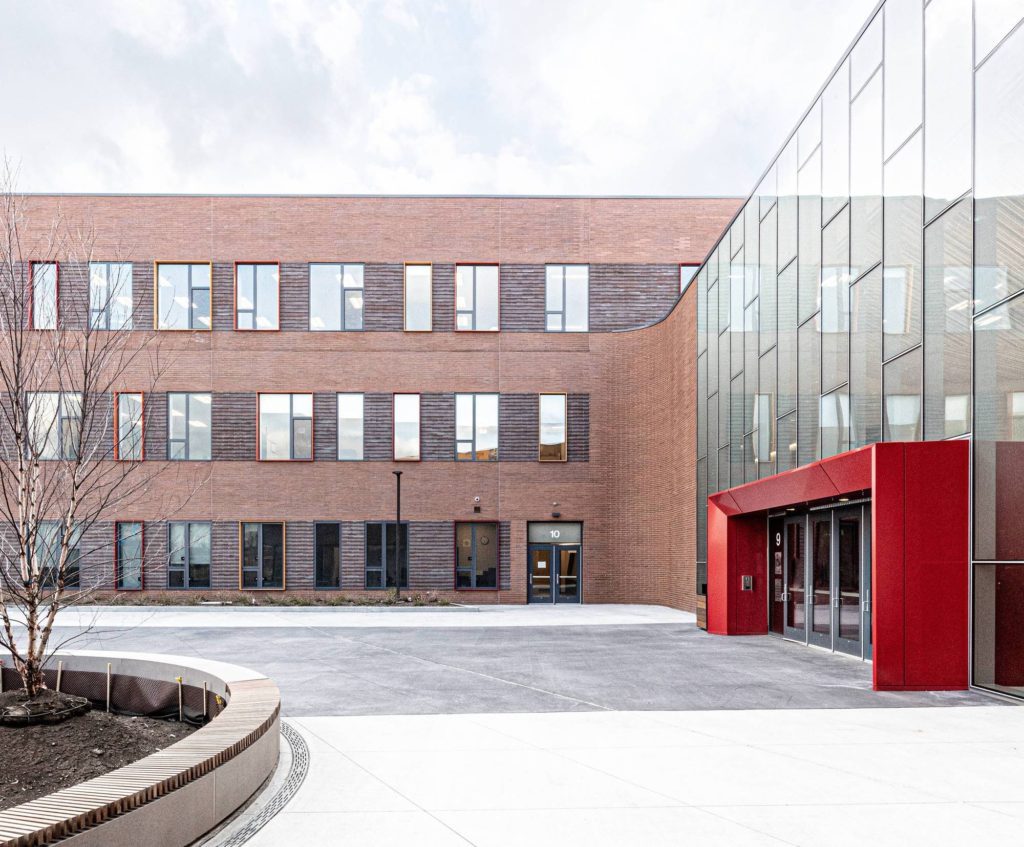
The first thing they did was create variation in the shapes of the windows, with shades of red, orange, and yellow punctuated across the façade. The Emperor brick itself comes in a color variation; one is a lighter red while the other is an earthier terracotta color. The darker brick is layered in distinctive bands around the windows of Taft Academy, which were then offset to create ridges along the façade. This two-tone look carries across the entirety of the school, offering depth and variation to the façade that radiates a sense of warmth and complexity. In 2019, the Masonry Advisory Council awarded STLarchitects the Excellence in Masonry Architectural Award for Taft Academy.
Creating a Link
Much of the day-to-day work on the site was handled by Technical Coordinator Wade Splinter, who met with contractors, masons, engineers, and consultants to make sure that the building was constructed to the firm’s specifications. One of Splinter’s main priorities was utilizing the school’s brick masonry to merge the academic and athletic wings into one cohesive form.
“What was very important to us was to try to unify those two major elements as much as possible,” Splinter said. While still working within the Chicago Public School’s guidelines, STLarchitects commissioned a special, custom-made form of curved brick that would seamlessly connect the two wings of the school together. The curved brick connects at the “Link,” the main entrance of the school, that serves as a bridge between the two wings.
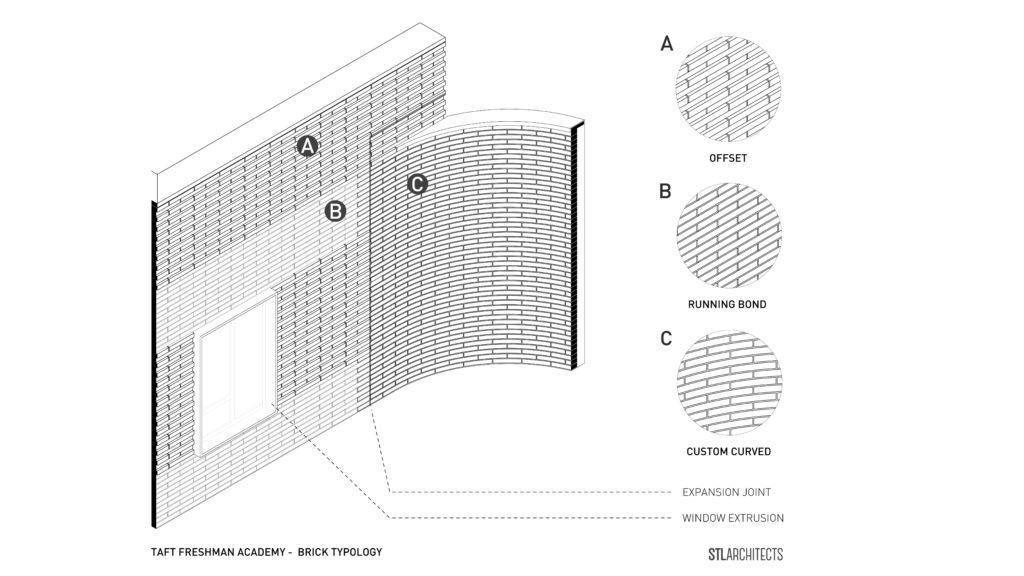
Executing such a unique masonry concept came with its own challenges. When the curved brick reached the site, Splinter and the contractors began to dry stack it to preview what it would like in the final project. As the corner was built, Splinter noticed that small differences in each individual brick created a “basket weave” effect at a large scale, becoming noticeable when the overhanging bricks casted small shadows on the wall.
Splinter and Salvia worked with the contractors to vary the stacking and grout in the wall to offset the irregularities found in each individual brick. The result is a visually striking demonstration of masonry technique experienced by students, teachers, and parents alike as they approach the school. When facing the Link, there are no abrupt corners where the walls meet. Rather, the façade flows around the two distinct buildings and forms one unified concept.
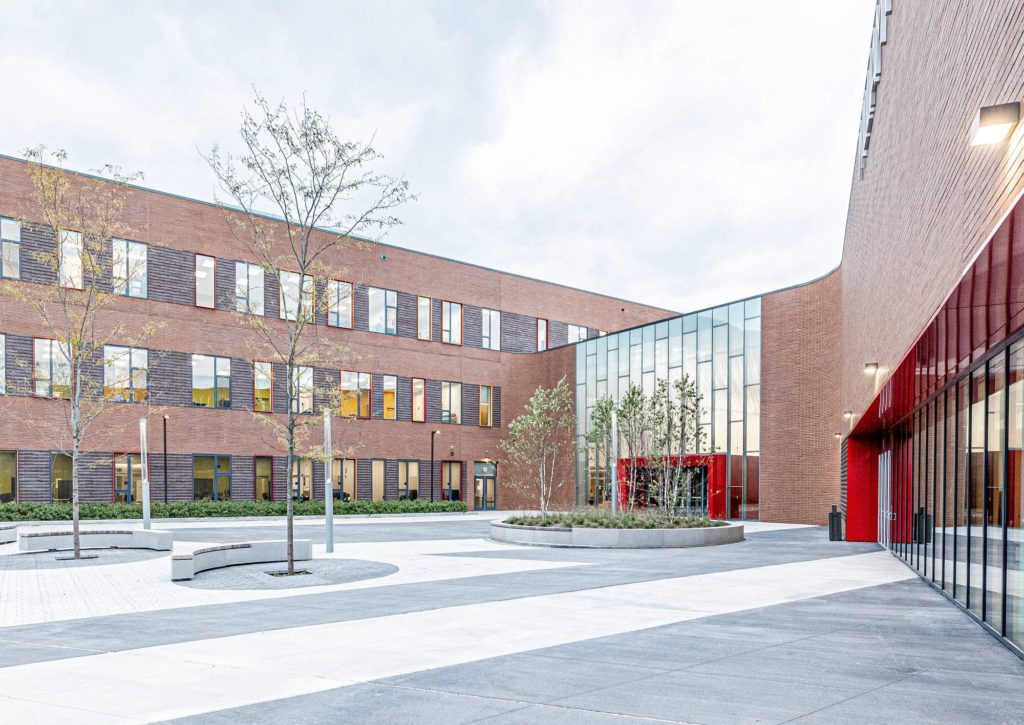
At certain moments in the day, when the sun reaches just the right spot in the sky, the individuality of each of the curved bricks is revealed as shadows form on the wall. In a modern era of precisely machined glass and perfect computer renderings, some may view these small differences in the joint widths as a weakness. Yet Salvia sees this as a unique chapter in the story of the building’s construction and a testament to the handmade quality of brick.
“There’s a humanity inherent in brick that people can relate to,” Salvia said. You can sense on a subconscious level that a human being put this together. There’s a warmth in that.”
